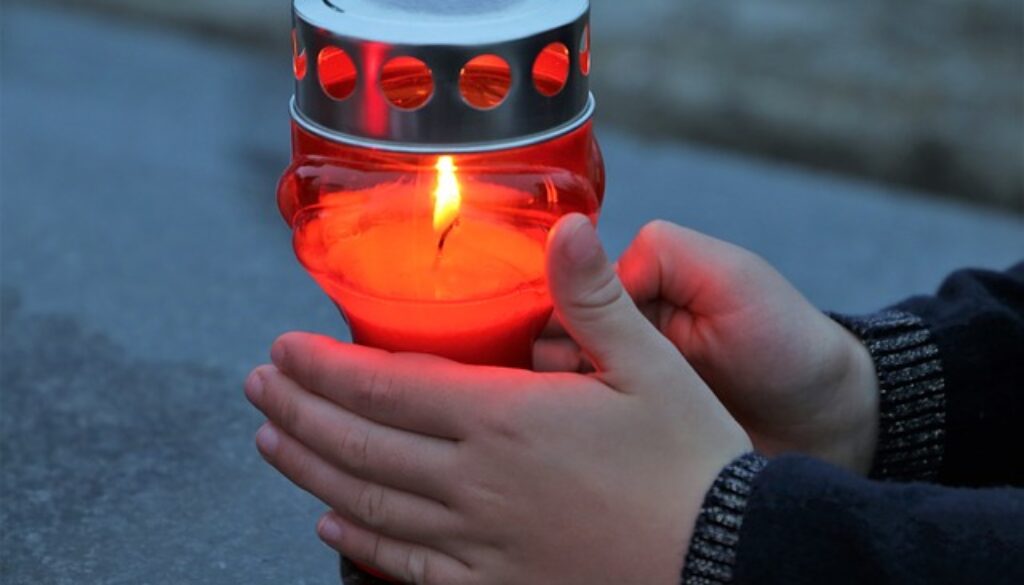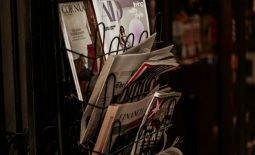The Torah of Trauma
One of the most stunning lines from Psalms comes from Psalm 148: ‘HaRofeh lishvurey lev umechabesh le’atzvotam’ – ‘God is the Healer of the brokenness of heart and the binder of their wounds.’
Brokenness is a universal human experience: everyone has encountered brokenness in their lives, their world or in themselves. Of course, while brokenness is the great leveler, our experience of brokenness is not a level playing field. Some of us are subjected to greater trauma than others; some of us may have more access or resources to heal from or repair the brokenness we face. Nonetheless, I’d wager to say that as I give this sermon, there will a number of you who are encouraged to reflect on what is broken in your lives. It seems as inevitable as death.
To the mystical Kabbalists of the late Medieval period, brokenness was not just as inevitable as death but also inevitable to life. According to these esoteric thinkers, including the disciples of the great Kabbalist Isaac Luria, brokenness was a pre-condition for the creation of the world. In a compelling metaphor called ‘Shevirat Keilim’, ‘the breaking of the vessels’, they taught that God’s infinite light of Creation could not be contained by the finite ‘vessel’ of the observable universe. Like boiling water poured into a delicate crystal goblet, the vessel cracked – scattering God’s shards of light through the four corners of the world. Our world, according to this image, is both spectacularly beautiful as it is impossibly broken. It is the Jew’s duty, the Kabbalists argued, to gather the shards and raise their sparks through the performance of mitzvot, to be reunited with the Godhead: one of the original terms of ‘tikkun olam’, the ‘repair of the world.’
Our world is both spectacularly beautiful as it is impossibly broken
This theology emerged from the profound trauma of the expulsion from Spain. The elegance of their doctrine was not to obfuscate the ugliness they had witnessed but to reframe it and breathe purpose into it.
There is a curious occurrence in the Torah portion this week. Among the spectacle of the Golden Calf and Moses’ anger, we learn that Moses smashes the tablets inscribed with the Ten Commandments. The Hebrew is instructive: he didn’t just drop them whereupon they broke (shavar), he hurled them and smashed them through the use of the emphatic ‘pi’el’ verb (shiber). Such a terse description is enough for us: Moses was irate. This is to be expected. What is less expected is what comes next: apart from reprimand and punishment of the idolaters at the foot of the mountain, Moses seeks his own type of healing. Having spent much time in the direct presence of God and having had to ‘come down’ to the messiness and complexity of the real world, he yearns to gaze upon God’s presence once again. God responds gently: ‘ani a’avir kol tuvi al paneicha v’karati beshem Adonai lefanicha v’chanoti et asher echen v’richmati et asher arachem’ – ‘and I will let all My goodness pass before you and I will proclaim the Name of the Eternal before you and grant the grace that I grace and show compassionate that I show.’ (Ex. 33:20). It is this consolation and perspective that God gives Moses the strength to come to terms with his trauma which allows Moses to carve a set of second Tablets.
..brokenness can build great resilience
There is a purposeful pattern to this story: the acquisition of trauma, then a moral healing through being seen and loved, and a renewed ability to rise. This is the ideal script, of course, and we know life is much more complex. Still, the Torah gives us a compassionate model for dealing with brokenness. God never tells Moses to glue the broken pieces back together and pretend like nothing happened, nor does God say to throw them out and never think of them again. Instead, God charges Moses to revisit and acknowledge the source of his pain. Moses is encouraged to name it and create something life-giving out of it. In fact, the Talmud goes even further: ‘Luchot ve’shivrey luchot munachim be’aron’ – ‘the broken tablets where placed to rest in the Ark [of the Covenant]’. (Talmud Bava Batra 14b). The brokenness of that experience was integrated and taken with our people’s sojourning, among our holiest artefacts. This reminds us that brokenness needs not to be akin to fragility; on the contrary – brokenness can build great resilience.
The month of February is, as you may know, Black History Month. It is also Jewish Disability Inclusion Month. While both topics require so much more careful attention than one mere sermon, both have lessons of brokenness and resilience at their core. When I was conversing with American Jews of Color on Facebook, they shared with me terrible images of lynching and violence against people of color as well as the terrible pain and trauma endured by their communities to this day. Then one of my Black Jewish friends taught me an incredible lesson. He wrote: ‘Black History Month is our Yarhtzeit’. All of a sudden, he reframed the issue. This is not just about history condensed in the well-intentioned but sometimes tokenistic celebration of Black culture, but about a sacred narrative. This is about trauma and remembrance, resilience, dignity and hope. Yes – of course this is the Yahrtzeit for his community; it made perfect sense. All communities who have experienced marginalization need access to sacred reframing in order to help them come to terms with their experience and to help the rest of us learn the undeniable moral lessons from systemic oppression. We Jews know this all too well: we do this during Purim, we do this during Pesach – in fact, we reframe our trauma every time we recite, at our holiest and most joyous moments, ‘zecher litzi’at Mitzrayim’ – ‘in remembrance of the Exodus from Egypt’. Like the Kabbalists of yore, we stitch together what was torn asunder by anointing our wounds with holy balm.
Since this is also Disability Inclusion Month, there are powerful lessons here too. The brokenness of the tablets allows us not only to acknowledge, embrace and redefine brokenness and imperfection, but uplift and sanctify it. All are welcome. All must be included. God did not charge Moses to throw away the broken tablets: instead, they were lovingly stored alongside what was whole.
…Trauma deserves to be seen
I am humbled by the awareness that I am neither a person-of-color nor someone with a disability, any and all words on my part need to be filtered through my own limited experiences and implicit bias. Still, like any human being, we all need and deserve to be seen. The trauma of communities – whether it is the African-American community or our own – deserves to be seen. The trauma of individuals who are subject indignity and exclusion deserves to be seen. Being seen is important: not just for the subject but transformative for the person doing the looking. We cannot look away from what pains us or others. To do so is an act of privilege that we cannot morally afford. Like so many of us, I am slowly learning these lessons myself and I look forward to the learning and growth of a life-time and hoping that this sermon is not the end but a beginning of a life-long conversation.
The Chasidic teacher, S’fat Emet, teaches us that ‘only as the light of Torah is engraved and incised on the hearts of Israel, are the letters incised on the tablets as well. The real writing is one the heart, of which Scripture says: ‘white them upon the tablet of your heart.’ (Prov. 3:3).
‘HaRofeh lishvurey lev umechabesh le’atzvotam’ – ‘God is the Healer of the brokenness of heart and the binder of their wounds.’ But the Psalm states more: ‘Moneh mispar lekochavim, lechulam shemot yikra… me’oded anavim Adonai’ – ‘God is the Counter of the stars, and calls them all by name… God encourages the poor’.
May we, in the personal, private or even public brokenness of our lives always be moved with Divine compassion to see, acknowledge and speak the truth of ourselves and all others. May we write this truth upon the tablets of our hearts.




